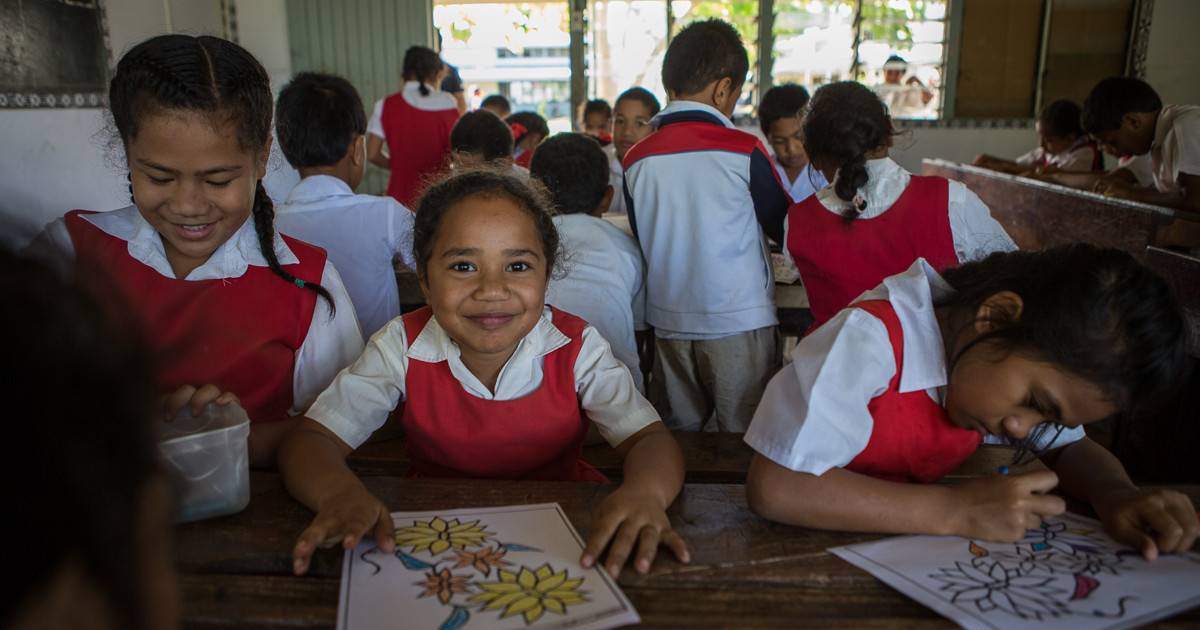
Improving the quality of education in the Pacific
Research 20 Sep 2022 6 minute readResults from the Pacific Island’s largest education assessment will help to inform improvements to literacy and numeracy in the region.
To mark International Literacy Day, results from the fourth cycle of the Pacific Islands Literacy and Numeracy Assessment (PILNA) were released on 8 September. Measuring the literacy and numeracy skills of 40,000 students who have completed four and six years of basic education in the Pacific, PILNA is administered by the Pacific Community’s (SPC) Educational Quality and Assessment Program (EQAP).
ACER has been working closely with EQAP as its technical partner since the second cycle of PILNA in 2015. Despite COVID-19 and natural disasters in the Pacific, PILNA 2021 was carried out in 952 participating schools across 15 countries in the region.
PILNA 2021 found that across the Pacific, Year 4 students are, on average, not meeting minimum expected proficiency levels in reading. However, Year 4 students are exceeding proficiency levels in numeracy. While expected levels of performance have not yet been established for writing, the average writing performance score has increased from previous cycles.
The results found that Year 6 students are, on average, meeting the minimum expected proficiency levels in reading and are also exceeding expectations in numeracy. As with Year 4, expected levels of performance have not yet been established for writing, but the average writing performance was on par with 2018.The fourth cycle results also show that girls still outperform boys in numeracy and literacy, including both reading and writing.
Understanding students’ grasp of foundational literacy and numeracy skills are vital for learning growth and active participation in society. Since 2018, PILNA has also collected background information from students, teachers and principals through contextual questionnaires.
‘PILNA does more than just measure reading, writing and numeracy proficiency,’ says EQAP’s Director, Michelle Belisle.
‘The wealth of contextual information collected from students, teachers, school leaders and education systems gives stakeholders rich information about the teaching and learning environments that underpin the results.’
Responses to the PILNA 2021 contextual questionnaires suggest that disruptions to learning impact access to education and that countries are not yet ready to cope with remote learning.
For the first time, PILNA results have been reported through a digital platform. The cutting-edge design enables a range of stakeholders – ministries, schools and teachers – to explore the data and answer questions related to their needs. The new format enables the use of data and evidence to understand what students know and can do, and helps governments make informed policy decisions based on what is best for their schools.
PILNA 2021 identified two priority areas for intervention: student reading performance and formative assessment practices. Students require reading ability to engage with texts, understand problems and succeed in all subjects. That is why targeted interventions for reading performance are needed from household to government and regional levels to address the relatively low reading performance scores.
Formative assessment practices are also a priority as they are one of the most effective strategies for improving student performance in all areas. Formative assessment can be described as frequent and informal assessment of student learning that identifies learning needs and allows teachers to adapt their teaching accordingly. These practices are powerful tools that can also improve teaching and learning for whole classes, as well as individual students.
ACER works alongside EQAP to support the whole assessment program – from test design and item development, to the development of questionnaires, and analysis and reporting. Working together leads to a more strategic approach and ultimately, better outcomes for all stakeholders.
The PILNA data enables stakeholders to understand factors that impact student performance. Following the launch of the regional report, ACER and EQAP will work with participating countries to understand their results, implement recommendations, and make improvements to teaching and learning.
More information
PILNA is one of EQAP’s activities under the Pacific Regional Education Framework (PacREF), and is funded by the governments of Australia and New Zealand.
Fifteen countries participated in the fourth cycle of PILNA – including Cook Islands, Federated States of Micronesia, Fiji, Kiribati, Nauru, Niue, Palau, Papua New Guinea, the Republic of Marshall Islands, Samoa, Solomon Islands, Tuvalu, Tokelau, Tonga, and Vanuatu.
Further reading
Read the PILNA 2021 report.
Learn more about PILNA.
